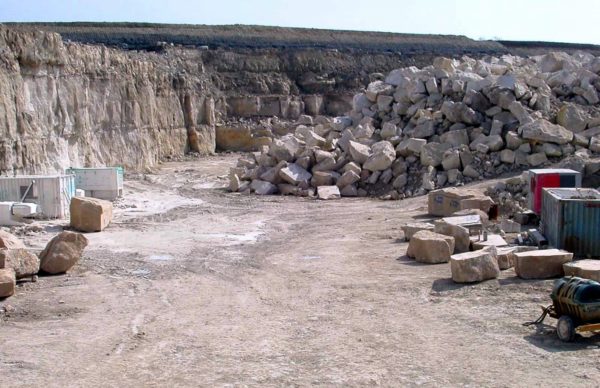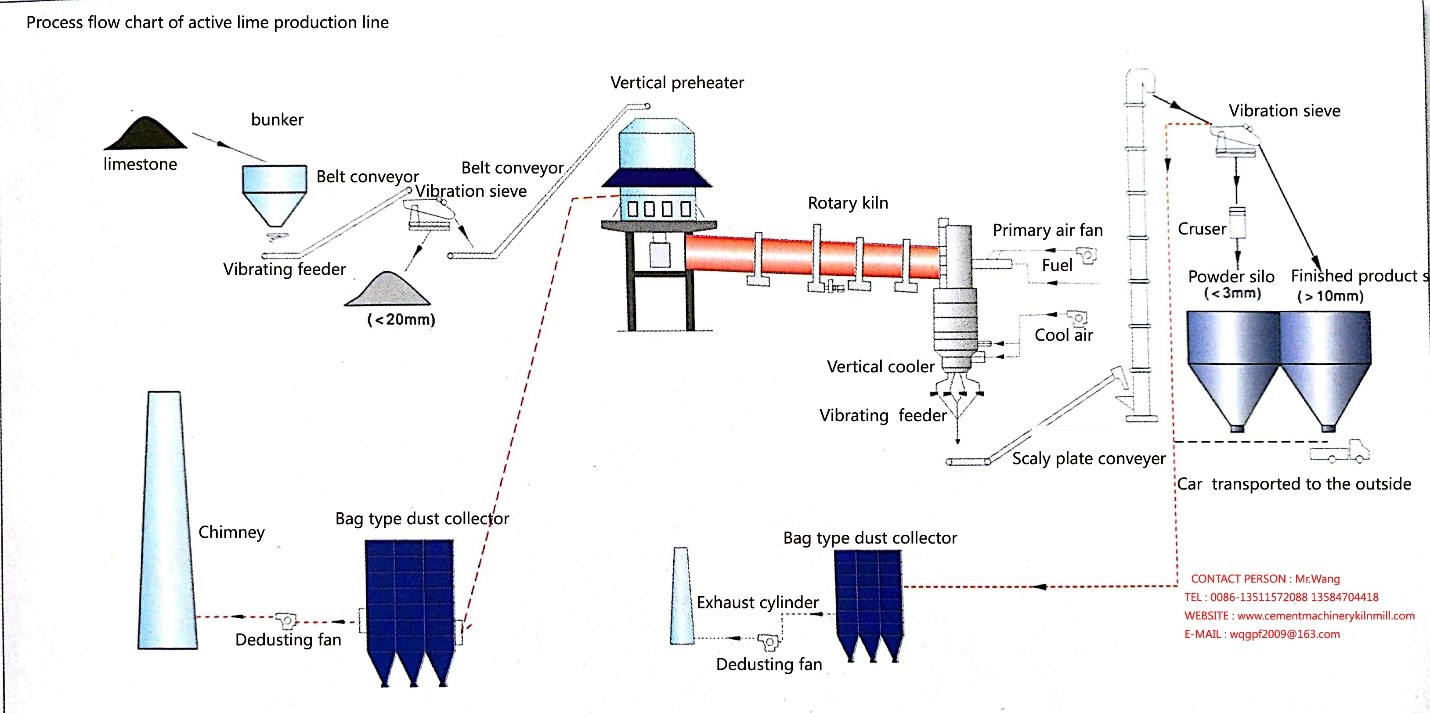Limestone is stirring naturally by alluvium deposits and ample sedimentary consisting of high content of calcium and/or magnesium carbonate and/or calcium and magnesium carbonate (Dolomite), along with plenty other types of minerals. Such sedimentary is a base for limestone formation. Lime production begins by extracting limestone from mines and quarries.
Such extractions supplied from mostly open deposits adjacent to the lime factory, but in some cases known as subsea boreholes and even underground mines are also subject for extractions. A standard excavation process includes:
- Elimination of excess (such as soil, clay and other debris covering sediment)
- Dynamite of the rock
- Loading and transporting blasted rock pieces for transport to crushing and sorting plant.

Lime is a multipurpose mineral that is a fundamental part of everyday life in human society which has numerous applications in different forms and content.
Lime Sizing
Limestone is crushed into parts through primary crushers at the initial stage of 100 – 250 mm. Based on initial sizes of extracted feed limestone, it may go through different other secondary or tertiary crushers for size reduction ranging from several inches to dust-size particles as limestone powder. Also, different types of kilns or furnaces would have an impact on the sizing and sorting stage.
Normally sizes are ranging from 2 to 200 mm. Crushers take rocks up to one meter in diameter from deposits and then after crushing, stones are conveyed to the vibrating filters by belts and uneven parts are removed and sent back interchangeably. All material parts passing through the filters and mesh are used for kiln feed or feed lines of the secondary/tertiary crushers for further reductions.

The secondary crushers are producing lumps of 10 to 50 mm in size and after being meshed and sorted, they transferred to limestone storage or suitable compartment for lime kiln feed on belt conveyors or bucket elevators.
Depending on the characteristics of the rock (hardness, brightness, size, chemical composition, etc.) different types of pre-breakers can be used.
- Size crushers
- Rotary crushers
- Impact crushers
These are a few types as an example. Also, furnace load does not have to be very thin, saw, impact crunchers, and grinders are often more used as secondary crushers. Mostly, crushing plants are next to the furnace and are usually mobile.
Lime Calcination
It is possible to divide the heat and calcination of limestone into 3 general stages:
· Preheating – Limestone is heated directly in preheating kilns through emitted gases from fuel combustion like residual air and CO2 from calcination. Calcination or cooking limestone must be through the substantial transfer of heat to the stone for almost more than 800 ℃. Therefore, processed limestone is transported by conveyor belt to lime kilns and heated in higher temperatures.
· Calcining – The fuel is burned in the preheated area from the cooler zones and as the limestone moves down the kiln, the emit heat from fuel turns the limestone into quicklime and carbon dioxide (CO2). Maintaining a sufficiently high temperature in the range of 1200 -1 300 C to adjust the reactivity is crucial.
· Cooling – Cooling air would cool down the quicklime while leaving the calcining zone from the kiln through direct contact with some or all of the preheated combustion air.
There are many various types of kilns for such purpose, not among all the most type in use is rotary kiln which is a rotating cylinder on a horizontal and incline posture. Limestone is fed from the upper end of the kiln, meanwhile, fuel and combustion air are blown by fire from the lower end. Preheated limestone moves through the kiln and it is calcined into lime which ultimately discharges from the kiln into a cooler area.

Generally, shaft kilns consume relatively low amounts of heat due to their sealing and ability to efficiently transfer heat between gases and stones in the combustion zone. Though, most of the sulfur in the fuel remains, the use of low Sulphur fuel is necessary to obtain lower Sulphur remains. Older kilns tend to produce quicklime with a higher content of CaCO3 and relatively less or moderate reactivity. Modern design kilns incorporate features that enable higher efficient production with higher grades of reactivity of lime with lower CaCO3 content.
Countless Usage of Lime
Lime is a result of alluvium deposits and versatile mineral. Various forms of lime are used in many aspects such as environmental, metallurgical, chemical/industrial and construction applications. Limestone uses are elaborated briefly as follows:
There wouldn’t be any steel without lime, where it is used to remove impurities during steel manufacturing. However, lime is used to comply with air, drinking water, wastewater, and solid waste regulations. In construction, the main application for lime is in soil stabilization for roads, dams, airfields and construction foundations. It is indeed the key ingredient in mortar and plaster in lime slurry form. Lime works as an additive in asphalt and there are many other additional chemical and industrial uses of lime-like chemical manufacturing and etc.
How Hydrated Lime is made?
Quicklime is processed into hydrated lime by crushing the quicklime and add water to the crushed mixture of lime. Hydrated lime or slacked lime would be classified for each application before any transportation.
References:
https://www.lime.org/
https://www.eula.eu/
https://britishlime.org/
Related Product:




